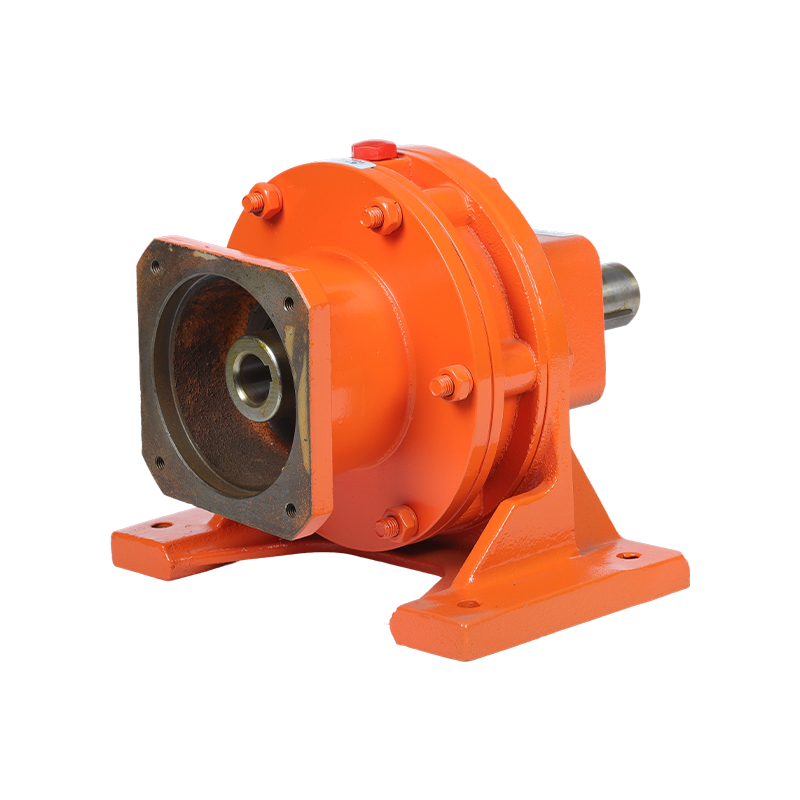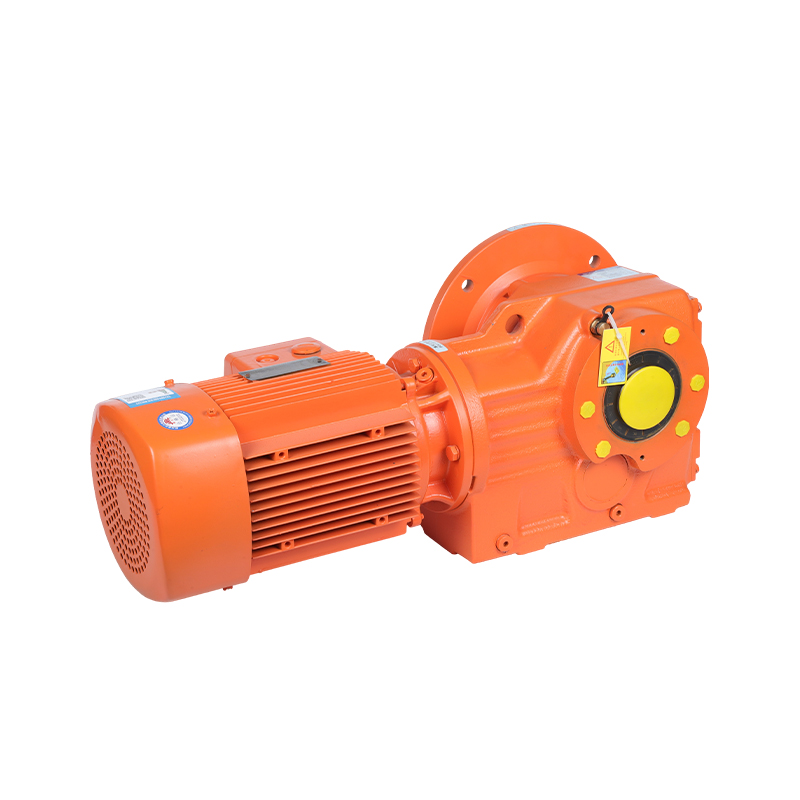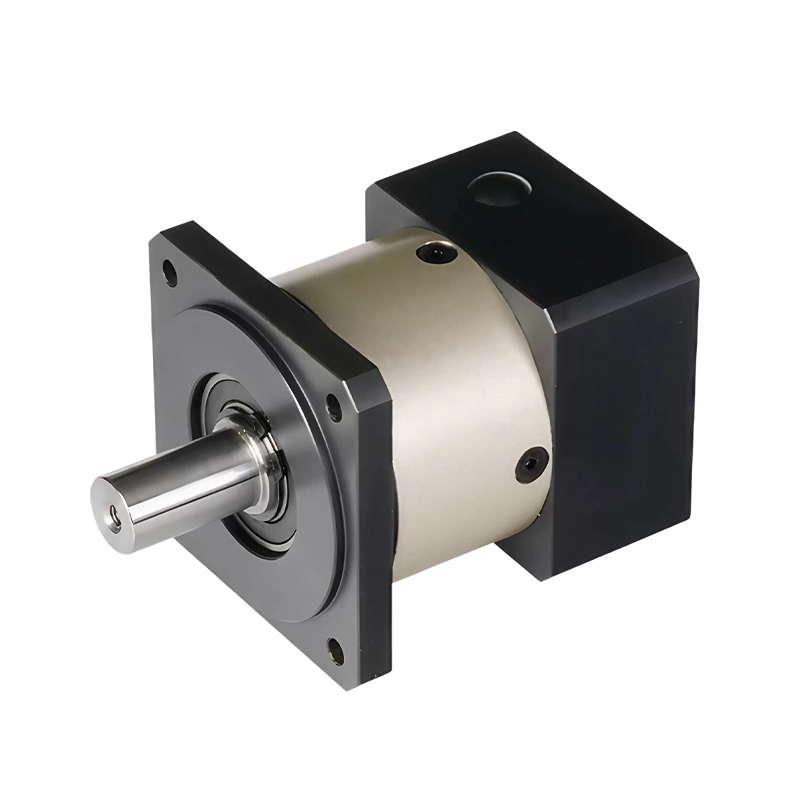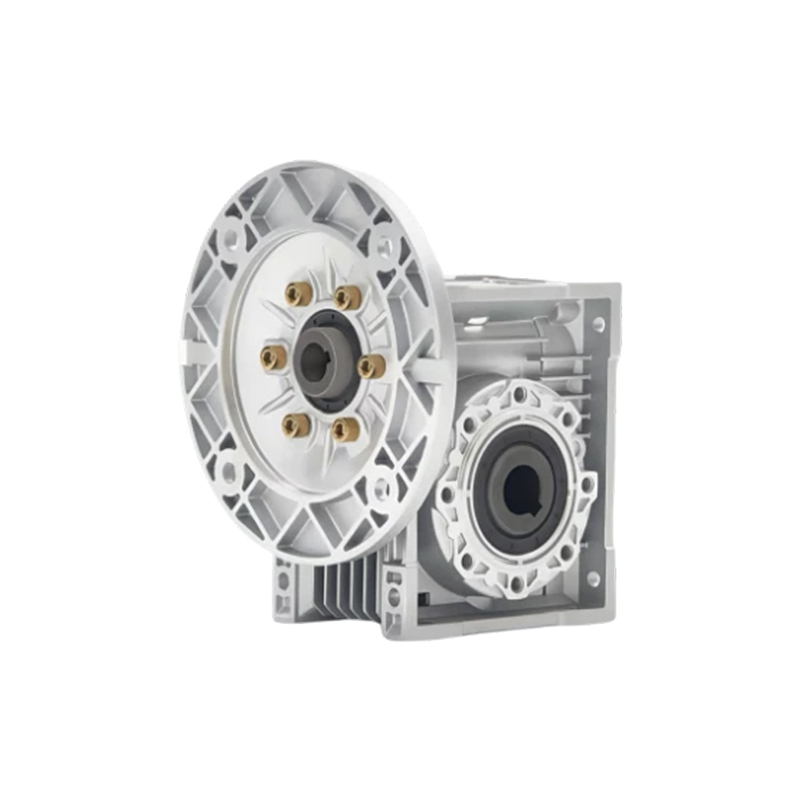Does a cycloidal pinwheel reducer have a self-locking function to prevent reverse drive of the load under specific operating conditions?
Release Time : 2025-09-30
In industrial transmission systems, gear reducers are not only devices for speed reduction and torque amplification, but also play a crucial role in maintaining positional stability and preventing accidental movement in some critical applications. When the equipment shuts down or loses power, if the load experiences a reverse driving force due to gravity or external forces, it may cause uncontrolled movement, equipment damage, or even personal injury. Therefore, whether a reducer has a self-locking function is an important indicator of its safety. The cycloidal pinwheel reducer, with its unique meshing principle and mechanical structure, exhibits inherent self-locking capabilities under specific operating conditions, providing reliable static safety for applications such as vertical lifting, inclined conveying, and hoisting equipment.
Self-locking refers to the inability of the output shaft to be driven in reverse by an external load when the input shaft is stationary, thus locking the mechanism in position. This characteristic is not possessed by all gear reducers. For example, some types of standard gear reducers or worm gear reducers, due to their transmission angle design, may not have self-locking capabilities and require additional brakes. The self-locking mechanism of the cycloidal pinwheel reducer stems from its unique transmission method—the combined rolling and sliding motion between the cycloidal disc and the pin gear. When the input shaft drives the eccentric mechanism to rotate the cycloidal disc, the teeth on the disc engage with the fixed pin gear ring, creating a high-contact, multi-tooth engagement for efficient power transmission. However, when attempting to apply a reverse torque from the output shaft, this engagement structure generates significant frictional resistance and a geometric locking effect.
In a stationary state, the cycloidal disc and pin gear are in close contact. The tooth profile design ensures that a reverse driving force must overcome the normal pressure and frictional angle at the engagement point to cause movement. Because multiple teeth participate in the force, the total resisting torque far exceeds the reverse torque that a typical load can provide, thus forming a mechanical "lock." This self-locking is not dependent on external brakes or electromagnetic devices, but is determined by the physical characteristics of the transmission itself, constituting a passive safety mechanism. Once the power supply is cut off or the system stops, the self-locking function activates immediately, without requiring any additional control signals or response time, ensuring the device maintains its current position under any emergency situation.
This feature is particularly important in vertical lifting equipment. For example, in material handling hoists, stage lifting platforms, or automated storage systems, if the gearbox lacks self-locking capability, the load may rapidly fall due to gravity when the motor loses power, causing serious accidents. Systems using a cycloidal pinwheel reducer, however, can reliably lock the load at a specific height even without power, providing safety during maintenance, emergency shutdowns, or power outages. Similarly, in inclined conveyors or tilting mechanisms, the self-locking function prevents material from sliding due to inertia or slope when the machine stops, ensuring controllable production processes.
It's worth noting that the self-locking capability of a cycloidal pinwheel reducer is closely related to its gear ratio, meshing angle, coefficient of friction, and lubrication condition. Generally, larger gear ratios and lower speed ratios result in more pronounced self-locking effects. However, excessive lubrication or very low speed ratios can reduce friction and weaken the self-locking performance. Therefore, in practical applications, its reliability should be evaluated based on specific operating conditions, and external braking devices may be needed to enhance safety.
Furthermore, the self-locking function does not affect the efficiency or smoothness of normal operation. The cycloidal pinwheel reducer maintains high transmission efficiency and low noise during normal operation, with smooth and consistent power transmission. Self-locking only activates when there is no input drive, and does not affect normal start-up, stop, or speed control.
In summary, through its unique mechanical meshing structure, the cycloidal pinwheel reducer achieves reliable self-locking under specific conditions. It enhances inherent system safety and reduces reliance on external braking components, simplifying the overall design. This inherent stability makes it a reliable core component for applications requiring position holding and anti-backdrive capabilities, silently ensuring safety and stability during every shutdown.
Self-locking refers to the inability of the output shaft to be driven in reverse by an external load when the input shaft is stationary, thus locking the mechanism in position. This characteristic is not possessed by all gear reducers. For example, some types of standard gear reducers or worm gear reducers, due to their transmission angle design, may not have self-locking capabilities and require additional brakes. The self-locking mechanism of the cycloidal pinwheel reducer stems from its unique transmission method—the combined rolling and sliding motion between the cycloidal disc and the pin gear. When the input shaft drives the eccentric mechanism to rotate the cycloidal disc, the teeth on the disc engage with the fixed pin gear ring, creating a high-contact, multi-tooth engagement for efficient power transmission. However, when attempting to apply a reverse torque from the output shaft, this engagement structure generates significant frictional resistance and a geometric locking effect.
In a stationary state, the cycloidal disc and pin gear are in close contact. The tooth profile design ensures that a reverse driving force must overcome the normal pressure and frictional angle at the engagement point to cause movement. Because multiple teeth participate in the force, the total resisting torque far exceeds the reverse torque that a typical load can provide, thus forming a mechanical "lock." This self-locking is not dependent on external brakes or electromagnetic devices, but is determined by the physical characteristics of the transmission itself, constituting a passive safety mechanism. Once the power supply is cut off or the system stops, the self-locking function activates immediately, without requiring any additional control signals or response time, ensuring the device maintains its current position under any emergency situation.
This feature is particularly important in vertical lifting equipment. For example, in material handling hoists, stage lifting platforms, or automated storage systems, if the gearbox lacks self-locking capability, the load may rapidly fall due to gravity when the motor loses power, causing serious accidents. Systems using a cycloidal pinwheel reducer, however, can reliably lock the load at a specific height even without power, providing safety during maintenance, emergency shutdowns, or power outages. Similarly, in inclined conveyors or tilting mechanisms, the self-locking function prevents material from sliding due to inertia or slope when the machine stops, ensuring controllable production processes.
It's worth noting that the self-locking capability of a cycloidal pinwheel reducer is closely related to its gear ratio, meshing angle, coefficient of friction, and lubrication condition. Generally, larger gear ratios and lower speed ratios result in more pronounced self-locking effects. However, excessive lubrication or very low speed ratios can reduce friction and weaken the self-locking performance. Therefore, in practical applications, its reliability should be evaluated based on specific operating conditions, and external braking devices may be needed to enhance safety.
Furthermore, the self-locking function does not affect the efficiency or smoothness of normal operation. The cycloidal pinwheel reducer maintains high transmission efficiency and low noise during normal operation, with smooth and consistent power transmission. Self-locking only activates when there is no input drive, and does not affect normal start-up, stop, or speed control.
In summary, through its unique mechanical meshing structure, the cycloidal pinwheel reducer achieves reliable self-locking under specific conditions. It enhances inherent system safety and reduces reliance on external braking components, simplifying the overall design. This inherent stability makes it a reliable core component for applications requiring position holding and anti-backdrive capabilities, silently ensuring safety and stability during every shutdown.







